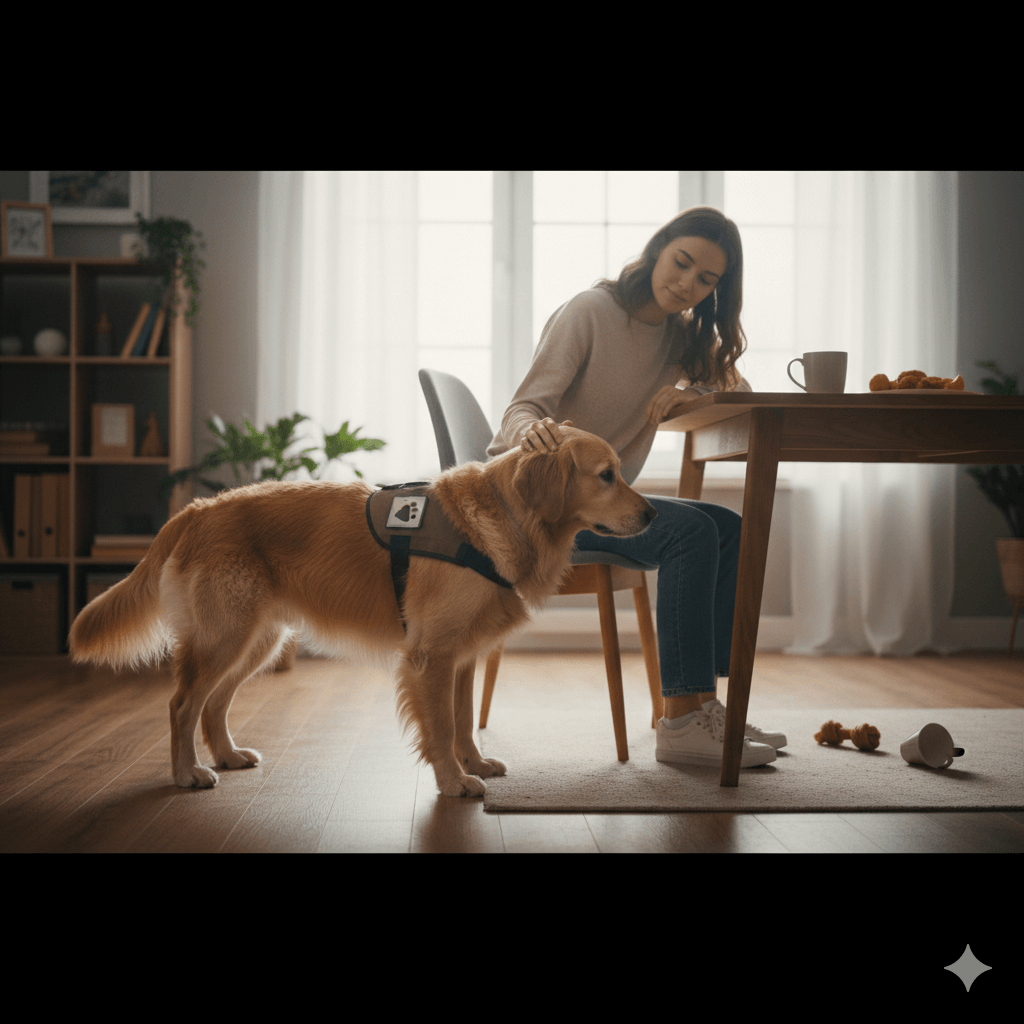Least Aggressive Dog Breeds
When choosing a canine companion, temperament is often a top priority for potential pet owners. While all dogs have unique personalities, some breeds are naturally more gentle and less prone to aggression. These least aggressive dog breeds make excellent family pets, therapy animals, or companions for first-time dog owners. Whether you’re looking for a playful pup or a calm cuddle buddy, understanding the characteristics of these breeds can help you find the perfect match. Let’s explore the qualities that make these dogs so lovable and well-suited for peaceful households.
Top Least Aggressive Dog Breeds
If you’re searching for a dog with a friendly and calm demeanor, these breeds stand out as some of the least aggressive options available. Each breed brings its own charm and suitability for various lifestyles.
Golden Retriever:
Known for their affectionate nature, Golden Retrievers are loyal, patient, and great with children, making them ideal family pets.Pug:
Pugs are small, playful, and love being around people. Their goofy antics and affectionate personality make them a joy to have around.Cavalier King Charles Spaniel:
This breed thrives on human companionship and is known for its gentle and loving temperament.Labrador Retriever:
Labs are friendly, outgoing, and eager to please, which contributes to their reputation as one of the most popular and least aggressive breeds.Bichon Frise:
With their cheerful disposition and hypoallergenic coat, Bichons are perfect for families or individuals seeking a low-drama companion.
These breeds exemplify the qualities of kindness and patience, making them excellent choices for homes seeking harmony and joy.

Characteristics of Least Aggressive Breeds
What sets least aggressive dog breeds apart from others? Their unique traits contribute to their calm and friendly nature, ensuring they fit seamlessly into various environments.
High Trainability:
Many of these breeds are highly trainable due to their intelligence and eagerness to please, reducing frustration during training sessions.Strong Bonding Tendencies:
Least aggressive breeds often form deep attachments to their owners, creating a sense of security and trust.Low Prey Drive:
These dogs typically have a reduced instinct to chase or react aggressively toward smaller animals or strangers.Adaptability to Different Environments:
From apartments to large homes, these breeds adjust easily to their surroundings without becoming anxious or territorial.Playful Yet Calm Energy Levels:
While they enjoy playtime, these dogs also know how to relax, making them suitable for both active and laid-back households.
Understanding these characteristics helps explain why least aggressive breeds are so beloved by families and individuals alike.
Check this guide 👉Jamaican Dog Breeds: Best 7 Expert Tips!
Check this guide 👉English Dog Breeds: Best 7 Expert Tips!
Check this guide 👉Brachycephalic Dog Breeds: Best 7 Expert Tips!
Least Aggressive Breeds | Best Suited For |
|---|---|
Golden Retriever | Families with kids, active lifestyles |
Pug | Apartment living, singles or seniors |
Cavalier King Charles Spaniel | Companionship, therapy work |
Labrador Retriever | Active families, outdoor enthusiasts |
Bichon Frise | Allergy sufferers, urban dwellers |
How to Ensure a Peaceful Relationship with Your Dog
Even the least aggressive breeds require proper care and attention to maintain their gentle nature. Here are some tips to foster a harmonious relationship with your furry friend.
Early Socialization:
Introduce your dog to different people, animals, and environments early on to build confidence and reduce fear-based reactions.Consistent Training:
Use positive reinforcement techniques to teach basic commands and encourage good behavior consistently.Regular Exercise:
Physical activity helps release pent-up energy, preventing boredom and potential behavioral issues.Mental Stimulation:
Puzzle toys, interactive games, and training sessions keep your dog mentally engaged and content.Routine Veterinary Care:
Regular check-ups ensure your dog remains healthy, as physical discomfort can sometimes lead to irritability.
By following these guidelines, you can nurture your dog’s natural gentleness and create a lasting bond built on trust and care.
Misconceptions About “Aggression” in Dogs
It’s important to address common misconceptions about aggression in dogs, especially when considering adopting a new pet. Not all behaviors labeled as “aggressive” stem from innate tendencies.
Aggression Is Often Learned Behavior:
Many dogs display aggression due to poor training, neglect, or past trauma—not because of their breed.Size Doesn’t Determine Temperament:
Smaller breeds can be just as calm and friendly as larger ones; size alone isn’t an indicator of aggression levels.All Breeds Can Show Aggression Under Stress:
Even the least aggressive breeds may react defensively if they feel threatened or uncomfortable.Training Reduces Negative Behaviors:
Proper guidance and socialization can significantly reduce the likelihood of aggressive tendencies in any dog.Environment Plays a Key Role:
A stable, loving home environment encourages peaceful behavior regardless of breed predispositions.
Understanding these truths helps dispel myths and promotes responsible pet ownership across all breeds.
Benefits of Owning a Least Aggressive Breed
Owning a least aggressive dog breed comes with numerous advantages that extend beyond their calm temperaments. These benefits make them particularly appealing to a wide range of pet owners.
Family-Friendly Nature:
These breeds are known for their patience and tolerance, making them safe and enjoyable companions for children.Therapy Work Potential:
Their empathetic and soothing presence makes many least aggressive breeds excellent candidates for therapy roles.Reduced Risk of Conflict:
Their non-confrontational demeanor minimizes the likelihood of altercations with other dogs or strangers.Lower Insurance Costs:
Some homeowner’s insurance policies offer lower premiums for owners of least aggressive breeds.Easier Integration into Communities:
These dogs are often welcomed in public spaces, parks, and rental properties due to their reputation for good behavior.
The benefits of owning a least aggressive breed highlight why they’re such a popular choice among dog lovers worldwide.
Tips for Choosing the Right Breed
Selecting the right least aggressive breed involves considering your lifestyle, preferences, and expectations. Keep these tips in mind to find the perfect match.
Assess Your Living Space:
If you live in an apartment, opt for smaller or more adaptable breeds like the Pug or Bichon Frise.Consider Activity Levels:
Match your dog’s energy level to your own—active owners might prefer a Labrador Retriever, while laid-back owners may favor a Cavalier King Charles Spaniel.Evaluate Grooming Needs:
Decide whether you’re prepared for high-maintenance coats (e.g., Bichon Frise) or prefer low-shedding, easy-care options (e.g., Labrador Retriever).Think About Allergies:
Hypoallergenic breeds like the Bichon Frise are ideal for allergy sufferers.Visit Shelters and Rescues:
Many mixed-breed dogs share the same gentle traits as purebred least aggressive breeds.
Taking the time to evaluate these factors ensures you choose a breed that aligns perfectly with your lifestyle.
Fun Facts About Least Aggressive Breeds
Beyond their gentle personalities, least aggressive breeds boast fascinating quirks and histories that make them even more endearing.
Golden Retrievers Were Originally Hunting Dogs:
Despite their calm demeanor today, Goldens were bred to retrieve game for hunters.Pugs Have Ancient Roots:
Pugs date back over 2,000 years and were cherished by Chinese emperors as royal companions.Labradors Are America’s Favorite Breed:
For decades, Labradors have topped the list as the most popular breed in the United States.Cavaliers Inspired Royal Namesakes:
The breed’s name honors King Charles II, who adored these dogs and kept them as constant companions.Bichons Were Circus Performers:
In the Renaissance era, Bichons entertained crowds with their acrobatic tricks and charming personalities.
These fun facts add depth and charm to the already delightful qualities of least aggressive breeds, making them even harder to resist!
Frequently Asked Questions About Least Aggressive Dog Breeds
Are least aggressive dog breeds suitable for first-time owners?
Yes, many of these breeds are highly trainable and adaptable, making them ideal for beginners.
Do least aggressive breeds require less exercise than others?
Not necessarily. While some breeds like Bulldogs are low-energy, others like Labradors need plenty of physical activity.
Can a least aggressive breed still show signs of aggression?
Any dog can display aggression if mistreated, poorly trained, or placed in stressful situations. Proper care minimizes this risk.
How important is socialization for these breeds?
Very important! Early and consistent socialization helps prevent fear-based behaviors and enhances their friendly disposition.
Are small breeds always less aggressive than large ones?
No, size doesn’t determine aggression levels. Both small and large breeds can be equally gentle depending on their temperament.
Finding Harmony with a Gentle Companion
Choosing a least aggressive dog breed can bring immense joy and tranquility to your life. Their friendly dispositions, adaptability, and loyalty make them wonderful additions to any household. By understanding their needs and providing proper care, you can ensure a lifetime of happiness and companionship with your new furry friend. Whether you’re a busy professional, a growing family, or a retiree seeking a loyal companion, there’s a gentle breed waiting to fill your home with love and laughter.
Understanding Bone Supplement for Cats: Best 7 Expert Tips! – Safe, vet-approved guidance for strong feline bones & balanced nutrition.
Bone Supplement for Dogs: Best 7 Expert Tips! – Expert guide to calcium, collagen & bone health for every life stage.
Understanding Can Cats Get Sunburn: Best 7 Expert Tips! – Protect your feline from UV damage with vet-backed prevention strategies.
How to Train a Seizure Alert Dog: Best 7 Expert Tips! – Learn expert-backed steps to nurture natural instincts into reliable, life-saving seizure alerts.





